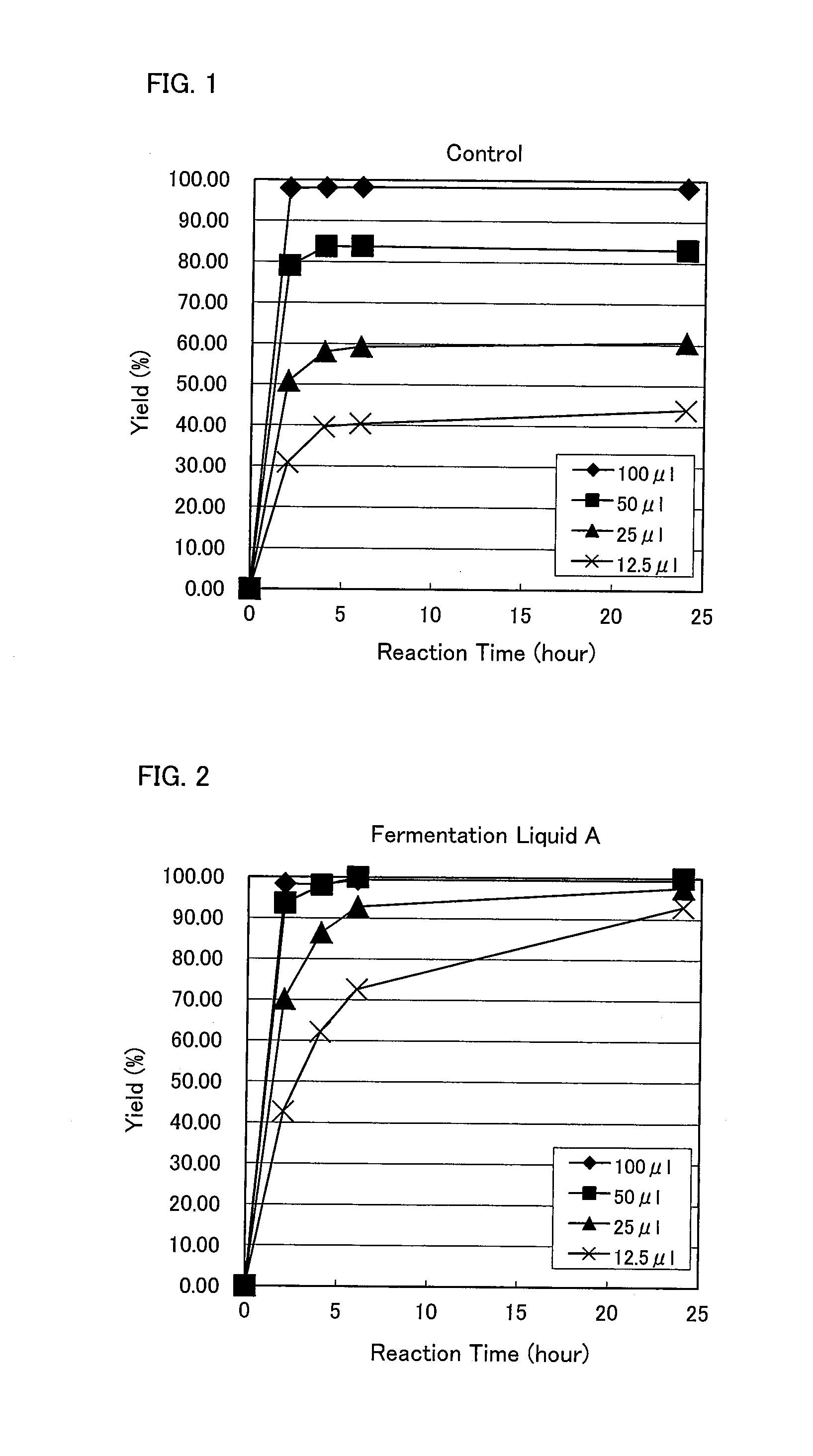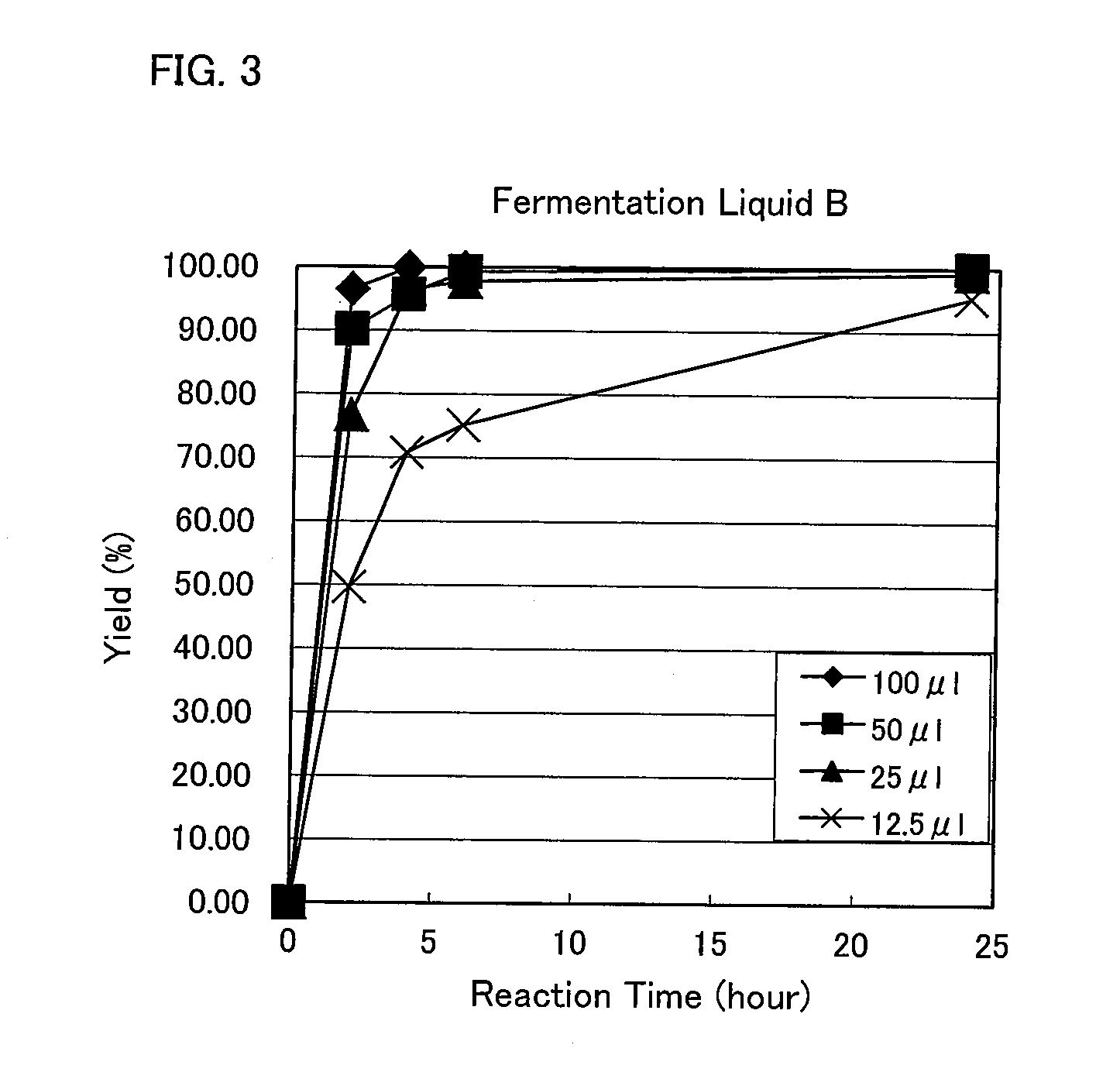Method for producing 1,5-pentamethylenediamine, mutant lysine decarboxylase, method for producing 1,5-pentamethylene diisocyanate and method for producing polyisocyanate composition
- Summary
- Abstract
- Description
- Claims
- Application Information
AI Technical Summary
Benefits of technology
Problems solved by technology
Method used
Image
Examples
reference example 1
Cloning of Lysine Decarboxylase Gene (cadA)
[0443]A genomic DNA prepared from Escherichia coli W 3110 strain (ATCC 27325) in accordance with a common procedure was used as a template for PCR.
[0444]As the primer for PCR, oligonucleotide (synthesized by Invitrogen Corporation by request) having a base sequence shown in sequence ID Nos. 1 and 2 designed based on the base sequence of lysine decarboxylase gene (cadA)(GenBank Accession No. AP 009048) was used. These primers have restriction enzyme recognition sequences of KpnI and XbaI in the proximity of 5′-end.
[0445]Using 25 μL of a PCR reaction liquid containing 1 ng / μL of the genomic DNA and 0.5 pmol / μL each of the primers, a PCR was conducted for 30 cycles under the following conditions: a reaction cycle of denaturation: 94° C., 30 seconds, annealing: 55° C., 30 minutes, and extension reaction: 68° C., 2 minutes.
[0446]PCR reaction product and plasmid pUC 18 (manufactured by Takara Shuzo Co., Ltd.) were digested with KpnI and XbaI, and...
example 2
[0457]A PCR was conducted using oligonucleotide (synthesized by Invitrogen Corporation by request) having a base sequence shown in Tables 1 to 6 and pCADA1 as a template.
[0458]That is, a PCR was conducted using pCADA1 as the template and sequence ID No. 5 and sequence ID No. 6 of the sequence listing for 16 cycles of a reaction cycle including the following: denaturation: 96° C., 30 seconds, annealing: 55° C., 30 seconds, and extension reaction: 68° C., 5 minutes and 20 seconds.
[0459]The obtained amplified fragment was treated with DpnI, and ligated using Ligation high. Thereafter, using the obtained recombinant plasmid, or by adding the amplified fragment treated with DpnI directly to competent cells DH5α, Escherichia coli DH5α strain was transformed. A plasmid was prepared from the produced strain, the base sequence was determined, and it was confirmed that the target base was replaced. The obtained plasmid was named pCAD2.
[0460]Plasmids of pCAD3 to pCAD...
example 3
Production of Multiple Mutation Strain
[0465]A PCR was conducted using oligonucleotide (synthesized by Invitrogen Corporation by request) having a base sequence shown in sequence ID Nos. 19 and 20, and pCADA5 as a template.
[0466]Then, a PCR was conducted for 16 cycles under the following conditions: a reaction cycle of denaturation: 96° C., 30 seconds, annealing: 55° C., 30 seconds, and extension reaction: 68° C., 5 minutes and 20 seconds.
[0467]The obtained amplified fragment was treated with DpnI, and ligated using Ligation high. Thereafter, using the obtained recombinant plasmid, or by adding the amplified fragment treated with DpnI directly to competent cells DH5α, Escherichia coli DH5α strain was transformed. A plasmid was prepared from the produced strain, the base sequence was determined, and it was confirmed that the target base was replaced. A plasmid was produced in the same manner using the plasmid as a template and the base sequence shown in sequence ID Nos. 35 and 36, and...
PUM
| Property | Measurement | Unit |
|---|---|---|
| Mass | aaaaa | aaaaa |
| Mass | aaaaa | aaaaa |
| Time | aaaaa | aaaaa |
Abstract
Description
Claims
Application Information
 Login to View More
Login to View More - Generate Ideas
- Intellectual Property
- Life Sciences
- Materials
- Tech Scout
- Unparalleled Data Quality
- Higher Quality Content
- 60% Fewer Hallucinations
Browse by: Latest US Patents, China's latest patents, Technical Efficacy Thesaurus, Application Domain, Technology Topic, Popular Technical Reports.
© 2025 PatSnap. All rights reserved.Legal|Privacy policy|Modern Slavery Act Transparency Statement|Sitemap|About US| Contact US: help@patsnap.com


